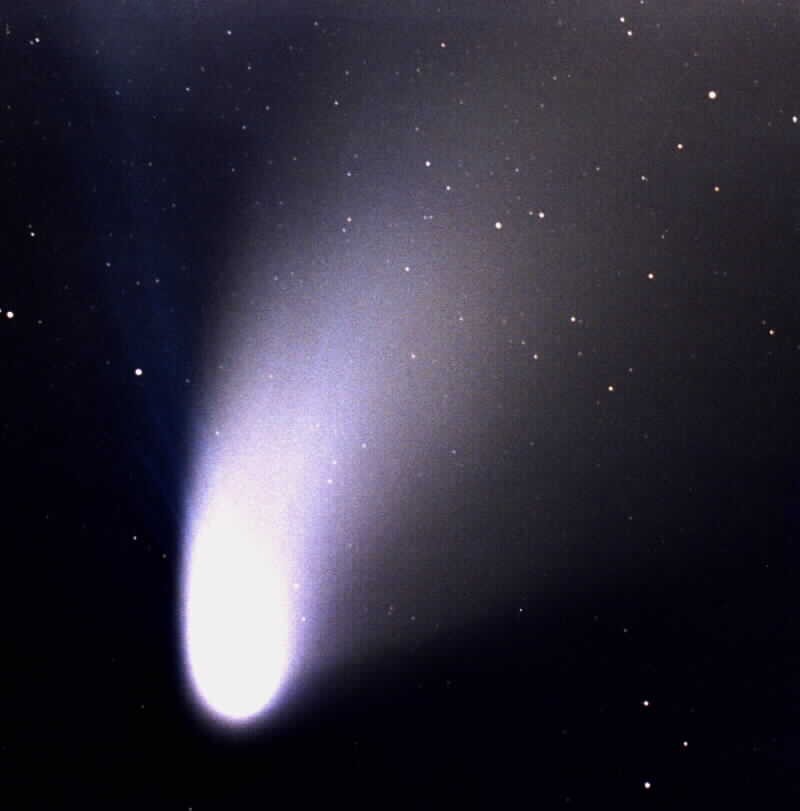
Comet Hale-Bopp was the comet of the decade. This comet was easily visible to the naked eye, even from a light polluted urban location. In May 1997, the comet was visible after sunset in the Western sky. I went out to my observatory in Iola, Texas to take this photograph.
Comets are frozen ice-balls left over from the material that formed the solar system. Comets spend most of their time far from the inner solar system in a region beyond the plant Pluto known as the Oort Cloud, orbiting at a distance of about half a light year from the Sun. When a comet is out in the Oort Cloud, it is much too far away to be seen from Earth. Comets are only discovered when the comet's orbit brings it into the inner solar system. When that happens, the heat from the Sun causes outer frozen layers of the comet to "melt" or sublimate, and the comet grows a tail. In this photo, you can see three tails. The blue ion tail is caused by the solar radiation ionizing particles that extend directly away from the direction of the Sun. The "sodium tail" is to the right of the blue ion tail, and consists of gas released by the heating effects of the Sun. To the far right, the dust tail consists of solid particles that trail off into space in the wake of the comet's orbit.
1.3 million years from now a star (known as Gliese 710) will pass close enough to our solar system to disturb the Oort Cloud, possibly triggering a downpour of comets earthward. Nevertheless, the deluge of comets driven toward our planet by such a disturbance will still take another several hundred thousand years to reach the inner solar system. One can only imagine how beautiful it would be to witness a significant number of comets like Hale-Bopp visiting the inner solar system at the same time. Of course, a cloudburst of comets raining in toward the Sun increases the danger of a comet crossing Earth's orbit. If a large comet impacted planet Earth, it would cause mass extinctions.
This is an unguided 10 minute exposure on hypered Kodak PPF 400 film taken with a Takahashi FS-128 refractor at prime focus operating with a reducer at f5.9.
Constellation: Taurus
RA:04h 50m 29.9s Dec:+24d 07' 14"
May 4, 1997 at 0200 U.T.
Photo by Sid Leach
Iola, Texas.
Recent Images.
Complete list of images.
Description of equipment used to acquire images.
Home
Feedback and comments should go to Sid